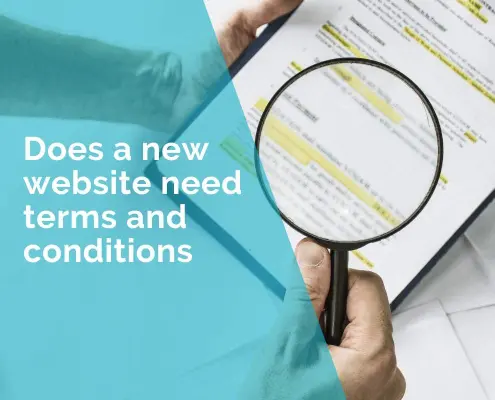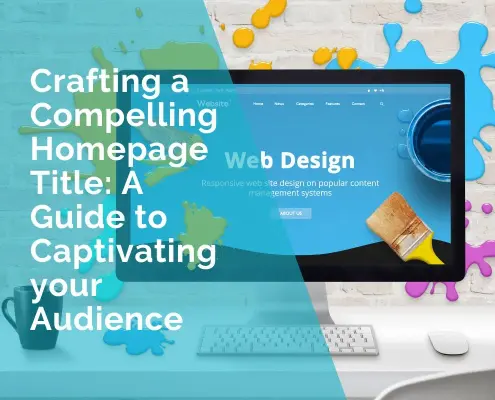Exploring Different Types of Blogs: A Detailed Guide
Step into the dynamic universe of blogs, where words transform into vibrant narratives! In our comprehensive guide, “Exploring Different Types of Blogs,” we invite you to navigate this captivating online space and acquaint yourself with the diverse tapestry of blogs.
Consider a personal blog as an open diary, a canvas where individuals express their thoughts and emotions, sharing their unique perspectives with the world. On the professional front, businesses utilize blogs as powerful tools to connect with audiences, weaving compelling narratives that resonate with people.
Dive into the world of niche blogs, dedicated to specific passions like travel or food. These blogs act as focal points, fostering communities of like-minded individuals who share common interests. In the business realm, blogs become storytelling mediums, allowing companies to forge meaningful connections with their customers.
Educational blogs break down knowledge barriers, freely disseminating information across the digital landscape. News and journalism blogs provide diverse perspectives and deliver news in innovative ways, contributing to the evolving landscape of online information.
Multimedia blogs transcend the confines of written words, incorporating visuals, videos, and podcasts to craft immersive and engaging narratives. Microblogging, exemplified by platforms like Twitter or Instagram, thrives on delivering concise yet impactful messages, shaping real-time conversations.
Ever considered sharing your insights on someone else’s platform? Welcome to the world of guest blogging, a friendly exchange of ideas where your voice finds resonance in new corners of the digital space.
Ready to embark on your blogging adventure? Allow us to guide you through the process – from selecting the right platform to crafting compelling content and leveraging social media to amplify your blog’s reach. Join us in this exciting journey into the heart of blogging!
Personal Blogs
Definition and Purpose
Imagine a personal blog as your online journal. It’s your space to share your experiences, thoughts, and feelings with the world. It’s like having a cozy coffee chat with the internet, letting people get to know the real you.
Examples of Personal Blogs
Think of Ivana, a travel enthusiast who shares her globetrotting adventures, complete with tips and breathtaking photos on her AdventureHQ blog.
Or there’s Mike, the DIY guru who documents his home improvement projects and shares how-tos. Personal blogs are as diverse as the people behind them.
Advantages
First off, it’s your creative haven – a place to express yourself without limits. It’s a fantastic way to connect with like-minded individuals who resonate with your experiences. Plus, it can be therapeutic, turning your thoughts into a digital storybook.
Challenges
But, hey, it’s not all sunshine and rainbows. Consistency can be a challenge – keeping the blog updated regularly takes effort. And, of course, there’s the vulnerability factor. Sharing personal stuff means putting yourself out there, which can be both rewarding and a bit nerve-wracking.
Personal blogs are like digital canvases for your thoughts and adventures. A bit like an online scrapbook where you’re both the artist and the exhibit. Ready to pen down your story? The internet’s waiting!

“Blogging is a way for people and businesses to share their thoughts and expertise online. It’s like creating a digital space where ideas are shared and heard by others.”
Ivana Katz
Professional Blogs
Definition and Target Audience
Think of a professional blog as your digital storefront. It’s where businesses and experts showcase their knowledge, products, or services. The audience here isn’t just your next-door neighbour; it’s potential clients, partners, and anyone interested in what you bring to the table.
Examples in Various Industries
Consider Sarah, a graphic designer whose blog is a visual feast of design trends and tips. Then there’s Alex, a tech whiz who runs a blog explaining complex coding concepts in plain English.
Professional blogs span every industry – from fashion and finance to tech and healthcare.
Tips for Success
Creating and maintaining a professional blog is like running a well-oiled machine. First, know your audience – tailor your content to what they want.
Consistency is key; think of it like tending to a garden – regular care makes it bloom. And don’t forget to sprinkle in some personality – people connect with people, not robots.
Picture it like a seasoned chef crafting a signature dish – each ingredient (or blog post) is carefully chosen to create a masterpiece. And just like a well-prepared dish leaves you satisfied, a well-maintained professional blog leaves your audience engaged and hungry for more.
So, ready to put on your digital power suit? A professional blog is your platform to shine, to showcase what you bring to the table in the vast online marketplace. Suit up, and let the blogging success begin!

Niche Blogs
Niche blogs is a distinct subset in the vast landscape of types of blogs. These blogs aren’t about casting a wide net; they’re the specialists in a specific playground, making waves where it matters most. Let’s embark on a journey to explore the unique and finely-tailored content that niche blogs offer in their dedicated domains.”
Definition and Significance
Picture a niche blog as a specialized boutique in a massive mall. Instead of offering everything, it focuses on a particular passion or interest. Whether it’s travel, food, or fashion, niche blogs zoom in on a specific topic, creating a haven for enthusiasts.
Examples in Different Areas
Imagine Mia, a fashionista who runs a niche blog dedicated to sustainable and ethical fashion. Her blog is a runway of eco-friendly trends, ethical brands, and tips on creating a stylish wardrobe with a conscience.
Then there’s Jake, the foodie extraordinaire who explores the world of unique recipes and local delicacies.
Niche blogs span every interest – from gardening and pets to fitness and technology.
Benefits
Why go niche? Well, it’s like being the go-to expert in a room full of curious minds. Your audience is there because they’re genuinely interested in what you have to say. Plus, it’s a fantastic way to build a community – a bit like having a cozy coffee shop where everyone shares the same love for a specific topic.
Challenges
But, of course, every rose has its thorn. It can be a bit challenging to find your niche and stand out in a crowded digital space. And there’s the risk of getting too specific – it’s a delicate balance between catering to a niche and ensuring a broad enough appeal.
Think of it like a masterclass in painting – while some artists cover every style, the niche artist hones in on a particular technique, becoming the Picasso of their field. A niche blog is your canvas, where you paint your passion with precision.
A niche blog is your ticket to becoming the authority in your chosen field. So, pick your niche, and let the blogging adventure begin!

Business Blogs
Business blogs is where words wield the power to shape brands and forge connections. These aren’t just casual chats; they’re strategic conversations designed to elevate businesses in the digital spotlight.
Definition and Role in Business Strategy
Think of a business blog as the storytelling engine of a company. It’s not just about products and services; it’s about the ethos, the journey, and the value a brand brings. A business blog is a narrative that weaves together the story of a company, making it relatable and engaging for its audience.
Examples of Successful Business Blogs
Take XYZ Tech – their blog isn’t just a tech manual; it’s a hub of insightful articles, breaking down complex tech topics into digestible pieces. Or consider ABC Fashion, where the blog isn’t just showcasing clothes but telling the story of the brand, its designers, and the fashion inspirations driving their collections.
How Businesses Can Leverage Blogs for Marketing and Branding
Now, let’s talk strategy. Imagine a blog as the charismatic spokesperson for a brand. Regular, high-quality content isn’t just informative; it’s a brand’s heartbeat. Through blogs, businesses can share expertise, showcase industry trends, and connect with their audience on a personal level.
Similar to a well-designed storefront that draws people in, a blog can be the digital storefront of a business. It’s not just a place to showcase products but an opportunity to communicate the brand’s personality, values, and expertise.
Picture it like a conversation between friends – a blog allows businesses to engage with their audience, answer questions, and provide valuable insights. And just like a friendly chat fosters a connection, a well-crafted blog builds a relationship between a brand and its customers.

Educational Blogs
Educational blogs are the digital classrooms where knowledge flows freely, transcending borders and barriers. These blogs aren’t just about information; they’re powerful tools shaping the future of learning.
Definition and Educational Value
Think of an educational blog as an open book that never closes. It’s a space where information, insights, and discoveries are shared, fostering a community hungry for knowledge. Educational blogs are the modern-day chalkboards, where lessons are not confined to four walls but reach anyone with an internet connection.
Examples of Educational Blogs in Various Subjects
Consider MathMinds, a blog dedicated to making complex math concepts accessible through real-life examples. Or LiteraryLift, where classic literature is explored in engaging ways. Educational blogs span across subjects – from science and history to languages and arts.
Tips for Educators and Learners
For educators stepping into the blogging arena, it’s akin to becoming the captain of an educational spaceship. First, tailor your content to your audience’s needs – much like designing a lesson plan. Use visuals and engaging examples to make your educational blog a stimulating learning environment.
For learners, diving into educational blogs is like embarking on a treasure hunt. Seek out blogs aligned with your interests, participate in discussions, and don’t shy away from asking questions. It’s a bit like having a personal tutor available 24/7, offering guidance and insights whenever you need them.
Analogous to a vibrant classroom where ideas are exchanged freely, educational blogs facilitate a continuous dialogue. It’s a two-way street where educators share wisdom, and learners bring their curiosity to the table. Picture it like a collaborative painting – each blog post adds a stroke of knowledge to the canvas of understanding.
So, whether you’re an educator shaping young minds or a learner hungry for insights, educational blogs are the portals to a world of continuous learning. Let’s transform the digital landscape into a boundless classroom where knowledge knows no limits!

News and Journalism Blogs
news and journalism blogs – the digital newsstands where information isn’t just reported; it’s dissected, analyzed, and shared with the world. These blogs aren’t just breaking news; they’re shaping the narrative and redefining how we consume information.
Definition and Role in Disseminating Information
Picture news and journalism blogs as the dynamic storytellers of the digital age. They’re not just delivering headlines; they’re providing in-depth insights, alternative perspectives, and context to the news. These blogs are the beating heart of information dissemination, transcending the limitations of traditional news mediums.
Examples of News and Journalism Blogs
Consider DailyInsights, a blog that delves into global events, offering detailed analysis beyond what fits into a headline. Then there’s OpinionExplorer, where writers share diverse perspectives on current affairs. News and journalism blogs span various topics – from politics and economics to culture and technology.
Discussing the Impact on Traditional Journalism
The impact of blogging on traditional journalism is analogous to a dance between the old and the new. Traditional journalism, like a seasoned waltz, is structured, refined, and timeless. Blogging, on the other hand, introduces a vibrant salsa – dynamic, fast-paced, and open to everyone.
Blogging has transformed news consumption into a participatory experience. It’s not just about receiving information; it’s about engaging with it. Traditional journalism remains the bedrock of integrity, while blogging injects a dose of immediacy and interactivity.
Imagine it as a relay race – traditional journalism passes the baton to blogging, and together, they create a seamless flow of information. Blogging has democratized news, giving a voice to the masses and offering a diverse range of perspectives. The impact is akin to a symphony where different instruments (traditional journalism and blogging) contribute to the harmonious flow of information.
So, in this digital age, news and journalism blogs aren’t just additional sources; they’re dynamic contributors shaping how we understand and engage with the world. Let’s embrace this fusion of tradition and innovation, where information is not just consumed but actively participated in!
Guest Blogging
Guest blogging isn’t just about sharing words; it’s about creating a dynamic exchange, benefiting both the contributor and the host blog.
Definition and Benefits
Think of guest blogging as a lively conversation at a dinner party. You’re not the host, but your voice adds a unique flavour to the gathering. Guest bloggers are individuals invited to contribute content to someone else’s blog. The benefits are abundant – exposure to new audiences, building authority in your niche and forging connections within the blogging community.
Tips for Becoming a Guest Blogger
Becoming a guest blogger is like earning a backstage pass to a concert. First, know the audience of the blog you want to contribute to – it’s essential to tailor your content to their interests. Craft a compelling pitch, showcasing your expertise and what you can bring to the table. Much like a musician perfecting their setlist, prepare your best work to impress the host blog.
Advantages for Both Guest Bloggers and Blog Hosts
For guest bloggers, it’s a bit like being a guest chef at a renowned restaurant. You bring your unique recipe (content) to a new audience, expanding your reach and building credibility. It’s a win-win – your expertise benefits the host blog’s audience, and you get exposure to potential followers.
Now, for blog hosts, inviting guest bloggers is akin to curating an art exhibition. Each guest blogger contributes a distinct piece, creating a diverse and engaging collection for their audience. It’s not just about new content; it’s about offering fresh perspectives and keeping the blog dynamic.
In the grand symphony of blogging, guest blogging is the collaborative crescendo. It’s an opportunity for voices to intermingle, creating a rich tapestry of ideas. So, whether you’re a guest blogger ready to showcase your expertise or a blog host eager to enrich your content, the stage is set for a harmonious collaboration. Let the guest blogging concert begin!
Multimedia Blogs
Multimedia blogs – the digital stage where words, visuals, and sounds come together to create a captivating symphony of content. Multimedia blogs aren’t just about reading; they’re immersive experiences that elevate storytelling to new heights.
Definition and Integration of Multimedia Content
Imagine a multimedia blog as a dynamic art gallery. It doesn’t just hang paintings; it projects videos, plays podcasts, and creates an interactive space. Multimedia blogs go beyond the written word, integrating various forms of content like videos, images, infographics, and podcasts to offer a rich and diverse experience.
Examples of Successful Multimedia Blogs
Consider VibeVerse, a music blog that not only discusses new releases but also features interviews, playlists, and even video snippets of live performances. Then there’s FoodFlicks, a culinary blog that pairs mouthwatering recipes with step-by-step cooking videos. Successful multimedia blogs span across genres – from lifestyle and technology to entertainment and education.
Exploring the Impact on Audience Engagement
The impact of multimedia on audience engagement is like turning a static painting into a 3D masterpiece. It goes beyond words on a screen; it’s about creating an emotional connection. Studies show that people retain information better when it’s presented through multiple senses – multimedia blogs tap into this by offering a multisensory experience.
Imagine it as a movie night versus reading a book – both can be enjoyable, but a well-crafted movie provides a more immersive and visually stimulating experience. Multimedia blogs bring this level of engagement, allowing the audience to see, hear, and experience content in a way that resonates with them.
In the vast ocean of content, multimedia blogs act as lighthouses, guiding audiences with engaging visuals and dynamic storytelling. It’s not just about conveying information; it’s about creating an experience that leaves a lasting impression.
So, whether you’re a content creator looking to spice up your blog or an audience seeking a more immersive journey, multimedia blogs are the gateway to a world where words dance with visuals and sounds. Let’s turn the digital canvas into a masterpiece of multimedia storytelling!

Microblogging
Welcome to the bite-sized universe of microblogging – the fast-paced, succinct way to share thoughts, updates, and ideas in the digital sphere. It’s not just short and sweet; it’s a dynamic conversation where brevity takes center stage.
Definition and Characteristics
Microblogging is like the Twitter of the digital world – concise, to the point, and perfect for the on-the-go lifestyle. It involves sharing brief snippets of information, limited to a set number of characters or seconds. It’s the quick chat at the water cooler rather than the lengthy boardroom meeting.
Examples of Popular Microblogging Platforms
Twitter, the pioneer in microblogging, restricts messages to 280 characters, making it a hub for real-time updates, news bites, and concise conversations. Instagram, with its emphasis on visual content, also incorporates microblogging through short captions, turning images into stories. These platforms are like express trains – they get you to your destination (information) quickly and efficiently.
Discussing the Advantages and Limitations of Microblogging
The advantages of microblogging are similar to having a pocket-sized encyclopedia. It’s immediate, allowing for real-time communication and quick information dissemination. Microblogs are also highly shareable, amplifying their reach across the digital landscape. The hashtag culture on platforms like Twitter turns microblogs into global discussions, connecting people with shared interests.
However, the concise nature of microblogging can be a double-edged sword. While brevity is the soul of wit, it can limit the depth of discussions. It’s like trying to fit an epic novel into a haiku – you capture the essence, but the nuance might get lost. Additionally, the speed at which information flows in the microblogging world can sometimes contribute to the spread of misinformation.
In the digital fast lane, microblogging is the speedster, offering quick insights and instant updates. It’s not just about condensing information; it’s about sparking conversations that travel at the speed of a tweet or a snap. So, whether you’re a quick-witted communicator or an information seeker with limited time, microblogging is your express lane to the heart of the digital buzz. Ready to jump in? Let’s keep it short, sweet, and impactful!
Tips for Starting a Blog
Starting a blog isn’t just about words on a screen; it’s about creating a space that resonates, captivates, and leaves a lasting impression. Let’s dive into the essentials of blog inception.
Identifying Your Purpose and Target Audience
Starting a blog is like embarking on a road trip. Before you hit the road, you need to know your destination. Identify your purpose – why do you want to blog? Is it to share personal experiences, offer professional insights, or contribute to a specific niche? Just like a roadmap guides your journey, understanding your purpose sets the direction for your blog.
Next up, your target audience – they’re the fellow travelers on this digital road trip. Picture them as your passengers; their interests, preferences, and needs will shape your content. Tailor your writing to resonate with them, creating a journey that they’ll want to be a part of.
Choosing a Blogging Platform
Selecting a blogging platform is akin to choosing the vehicle for your road trip. Consider your comfort, the features you need, and how easy it is to navigate. Popular platforms like WordPress, Blogger, and Medium offer diverse options, each suited to different preferences. It’s about finding the wheels that make your blogging journey smooth and enjoyable.
Creating Compelling Content and Maintaining Consistency
Now, let’s talk about the fuel that powers your blog – compelling content. Your words are the engine driving your blog forward. Craft content that informs, entertains, or inspires your audience. It’s not just about the destination; it’s about enjoying the ride. Use visuals, anecdotes, and your unique voice to make your content engaging and shareable.
Consistency is the steering wheel that keeps your blog on the road. Imagine your blog as a favorite TV show – your audience expects episodes at regular intervals. Whether you choose a weekly, bi-weekly, or monthly schedule, stick to it. Consistency builds trust and keeps your audience eager for the next instalment of your blog journey.
Utilizing Social Media for Blog Promotion
Now, think of social media as the billboards along the highway of the internet. It’s not enough to have a fantastic blog; you need to let people know about it. Share your content on platforms like Facebook, Twitter, Instagram, or LinkedIn – wherever your target audience hangs out. Social media is your megaphone; use it to amplify your blog’s reach and connect with fellow travellers.
Starting a blog is like setting sail on a digital expedition. With purpose as your compass, the right platform as your vehicle, compelling content as your fuel, and social media as your wind, you’re all set for a thrilling journey. Buckle up, fellow blogger – the road awaits, and it’s time to make your mark on the digital landscape!
Frequently Asked Questions
What defines a personal blog?
A personal blog is an online platform where individuals share their thoughts, experiences, and interests, creating a digital diary open to the public.
How does a professional blog differ from a personal blog?
While personal blogs express individuality, professional blogs serve strategic purposes for businesses or individuals in specific industries, often focusing on industry-related content for a professional audience.
What characterizes a niche blog?
A niche blog centers around a specific topic or interest, catering to a particular audience with shared passions, such as travel, food, or technology.
How can businesses benefit from having a blog?
Business blogs serve as powerful marketing tools, helping build brand identity, engage the audience, and establish authority within the industry.
How do news and journalism blogs differ from traditional news outlets?
News and journalism blogs offer a more personalized and opinionated take on news, providing in-depth analysis and alternative perspectives compared to traditional news outlets.
What is guest blogging, and how does it work?
Guest blogging involves writing content for someone else’s blog, a collaborative effort where the guest blogger gains exposure to a new audience, and the host blog benefits from fresh content.
What characterizes a multimedia blog?
Multimedia blogs incorporate various forms of content, such as videos, images, podcasts, and infographics, creating a more engaging and dynamic user experience.
What are the benefits of starting a blog?
Starting a blog allows individuals or businesses to share expertise, connect with a target audience, build credibility, and even generate income through various monetization strategies.
How can I choose the right blogging platform?
Choosing a blogging platform depends on your needs and preferences. Popular options include WordPress for versatility, Blogger for simplicity, and Medium for a built-in audience.
Can I have more than one type of blog?
Absolutely! Many bloggers incorporate elements of different types, creating a hybrid blog that caters to various interests and audiences.
How often should I update my blog?
Consistency is key. Whether it’s weekly, bi-weekly, or monthly, having a regular posting schedule helps maintain audience engagement and builds trust with your readers.
How many different types of blogs are there?
The number of different types of blogs is vast and continually evolving as new niches and interests emerge. Common categories include personal blogs, professional blogs, niche blogs (focused on specific topics like travel, fashion, or technology), business blogs, educational blogs, news and journalism blogs, guest blogs, multimedia blogs, and microblogs. Each type serves unique purposes, catering to diverse interests and audiences within the dynamic landscape of the blogosphere.
 Ivana Katz from Websites 4 Small Business is an award winning web designer who builds websites that build your business. She provides unbeatable web design services to fit your budget.
Ivana Katz from Websites 4 Small Business is an award winning web designer who builds websites that build your business. She provides unbeatable web design services to fit your budget.
The end result? Professional, custom-made sites that give your business the extra oomph it needs to stand out from the competition and make an impact.
Whether you’re a brand-new business or an established one ready to improve your digital presence, Ivana makes it easy to get your business online very quickly. Her websites are professional, tailored to fit your budget, and give your business a serious boost.
Download your FREE copy of “Ultimate Website Design Secrets Blackbook – 10 Bulletproof Strategies for Designing an Outrageously Successful Website”












